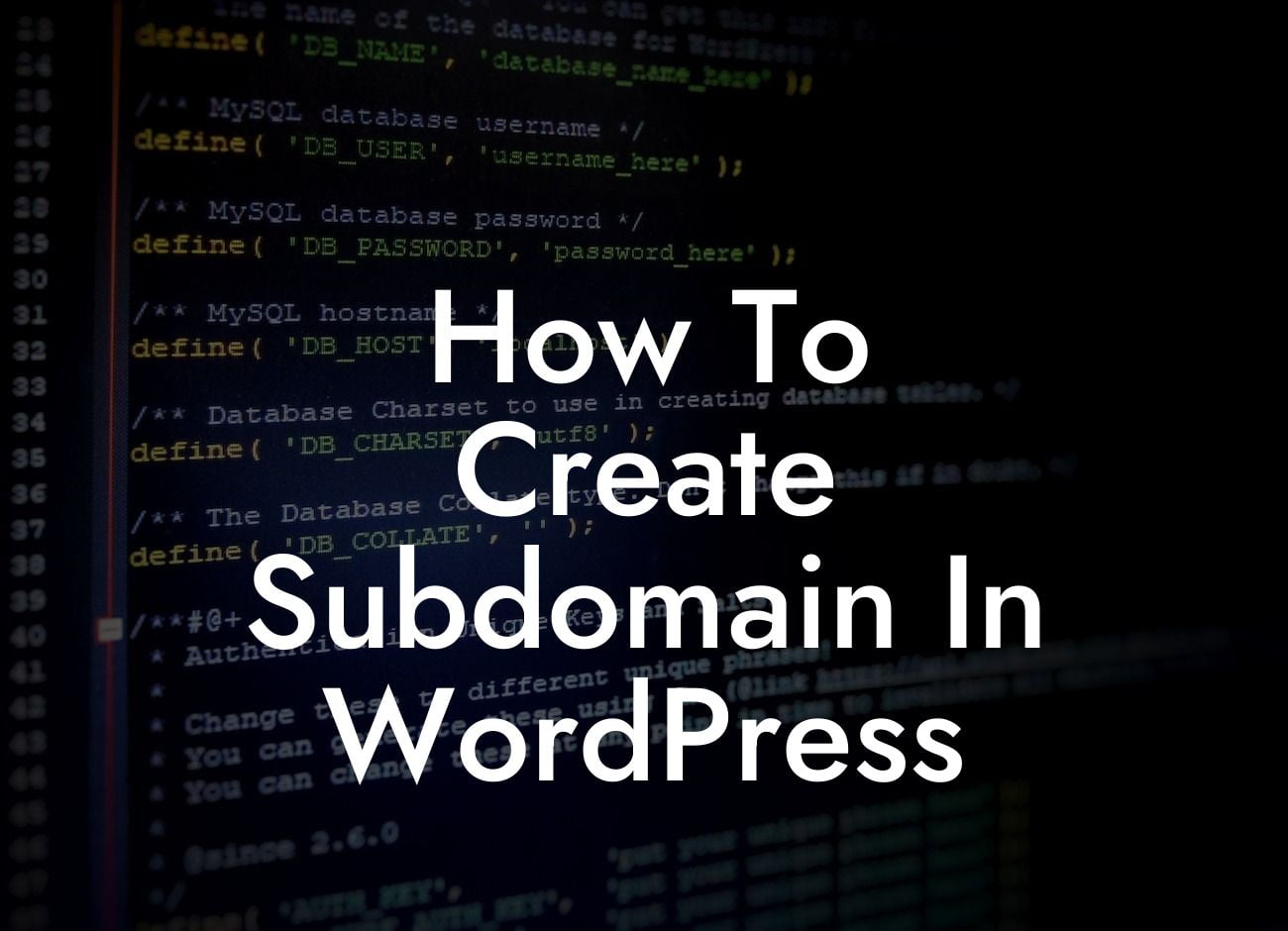Creating a subdomain in WordPress can bring dynamic changes to your website's structure and organization. Whether you're a small business owner or an entrepreneur, having a clear and efficient website structure is crucial for attracting and retaining visitors. In this article, we'll guide you through the process of creating a subdomain in WordPress, offering step-by-step instructions, detailed content, and a realistic example to help you elevate your online presence. Get ready to unleash the full potential of your WordPress site!
Creating a subdomain in WordPress is a straightforward process that offers various benefits. By dividing your website into subdomains, you can create separate sections or functionalities within your site, improving both user experience and search engine optimization. Let's dive into the detailed steps to set up a subdomain:
1. Choose a Host That Supports Subdomains:
Before we begin, ensure that your web hosting provider supports subdomains. Most reputable hosting companies offer this feature, but it's always best to double-check or consult their support team for guidance.
2. Access Your Domain's DNS Settings:
Looking For a Custom QuickBook Integration?
To create a subdomain, you'll need to access your domain's DNS settings. This can typically be done through your hosting account's control panel or a separate domain management platform. Look for options like "DNS Management" or "Domains."
3. Create a Subdomain Record:
Once you've accessed your DNS settings, locate the section for creating a new record. Add a new "CNAME" record and assign a unique subdomain name. For example, if your main domain is "example.com," you can create a subdomain like "blog.example.com" or "shop.example.com."
4. Point the Subdomain to Your Main Website:
After creating the subdomain record, you'll need to point it to the appropriate directory or folder in your main website. This ensures that when visitors access the subdomain, they are directed to the correct content or functionality. You can achieve this by entering the directory path or using advanced options provided by your hosting provider.
How To Create Subdomain In Wordpress Example:
To better understand the process, let's consider the example of an e-commerce store owner, Sarah. Sarah's main website is `sarahsexamplestore.com`, and she wants to create a subdomain for her blog. Through her hosting provider's control panel, Sarah creates a CNAME record with the name "blog" and points it to the directory where her blog content is located. Now, visitors can access her blog by typing `blog.sarahsexamplestore.com` in their browser, conveniently separated from the main e-commerce site.
Congratulations! You have successfully learned how to create a subdomain in WordPress. By effectively utilizing subdomains, you can enhance your website's functionality, organization, and user experience. Take your online presence to the next level by exploring DamnWoo's extraordinary WordPress plugins. Our plugins are specifically designed for small businesses and entrepreneurs like you. Don't settle for cookie-cutter solutions; embrace the extraordinary today. Share this article with others who might find it helpful, and stay tuned for more insightful guides from DamnWoo.













